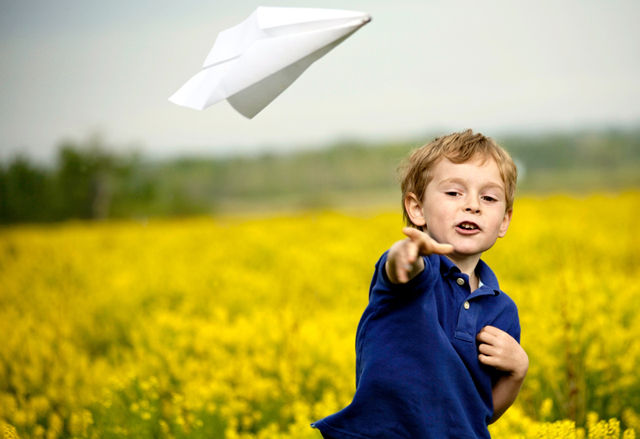 Parents who are nervous or fearful flyers may sometimes wonder how they can avoid passing their fear of flying on to their children. Should they hide it? Must they keep the child from seeing them upset on the plane?
Parents who are nervous or fearful flyers may sometimes wonder how they can avoid passing their fear of flying on to their children. Should they hide it? Must they keep the child from seeing them upset on the plane?
The answer, in a word, is no. Kids are afraid of things like snakes or bullies. There is nothing inside the plane that inherently frightens them; nor is there anything inside the plane that frightens the parent. For the fearful parent, the problem is not what is inside the plane; the problem is being inside the plane!
When something unexpected happens on board, stress hormones may be released. Stress hormones cause negative emotional arousal. We look around. We try to find out what provoked them. For an anxious person, even if nothing is obviously wrong, that arousal itself equals fear, and fear must surely equal imminent danger. Instead of waiting calmly to see what happens, this person desperately needs assurance that there is no life-threatening danger. If that assurance doesn’t come, the mind scans through its internal database of dire possibilities. One threat after another is imagined, releasing additional stress hormones which confirm, in the anxious person’s mind, that the fears are real.
Here’s the problem: inside the cabin, the fearful passenger feels there is no control and no escape, and thus there is no way to end the release of stress hormones. An environment that means “comfort” to others (including the passenger’s child) means “entrapment” to the fearful passenger.
For the child, however, being inside the plane is unlikely to be troublesome until he or she is an adult, and only then if normal emotional regulation – which is to say regulation that works automatically and unconsciously – has not been developed. How can you help your child achieve normal emotional regulation, and thus eventually become a fearless flyer?
For the securely oriented person, systems established early in life automatically keep arousal within acceptable limits. The insecurely oriented person must regulate arousal consciously and deliberately. Consider heating and air conditioning systems: before automatic thermostats, if you were cold, you’d build a fire. Too warm? You’d open a window. Similarly, when automatic regulation of arousal is lacking, arousal easily slips outside your comfort zone and you must control it deliberately.
A Harvard University video opens with this statement: “Science tells us brains – minds – are built, not born”. How do circuits that regulate arousal develop? The crucial period is early in life when the brain is growing rapidly. What the child experiences in those first few months determines how her brain circuits become organized.
Neuroscientist Donald Hebb once wrote, “any two cells or systems of cells that are repeatedly active at the same time will tend to become ‘associated, so that activity in one facilitates activity in the other.” When a child is afraid, certain cells in her brain are active. Let’s assume at that point a caregiver calms the child. That experience activates a second group of cells, which are then physically linked to the first. This phenomenon is called Hebb’s Law: “neurons that fire together, wire together.”
If the caregiver’s calming response to the child’s arousal is consistently repeated, the two brain cell groups become connected. Arousal then automatically causes calming, even when the caregiver is not present. If child and the caregiver experience different levels of arousal together, the child gains an automatic regulating response to any type of negative emotional arousal.
But if the caregiver does not respond to the child’s fear, she does not develop the “one-two” circuitry needed to automatically calm her. Conversely, if the caregiver ignores the child’s low levels of arousal, the child does not develop circuitry to rise automatically out of depression.
When we do not develop automatic regulation, we must control situations we get into, and avoid or escape situations we cannot control. This can make the difference between the calm flyer, and those who react with fear at the first sign of turbulence. Helping your child become a fearless flyer, then, has less to do with how you behave on the plane, and much more to do with how you help her early in life in moments of everyday stress.
Tom Bunn, L.C.S.W., is a retired airline captain and licensed therapist who has specialised in the treatment of fear of flying for over thirty years. He is the author the bestselling book on flight phobia, SOAR: The Breakthrough Treatment for Fear of Flying. His company, SOAR, Inc., founded in 1982, has helped more than 7,000 clients control fear, panic, and claustrophobia

